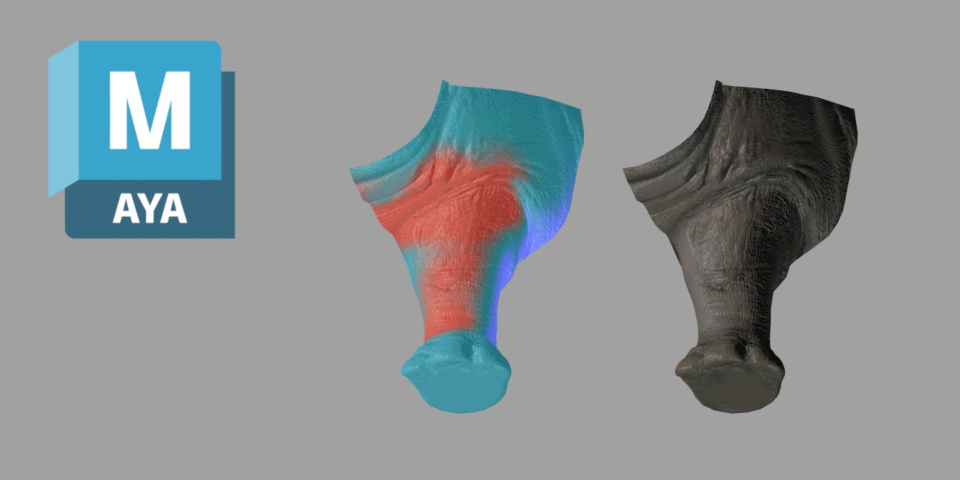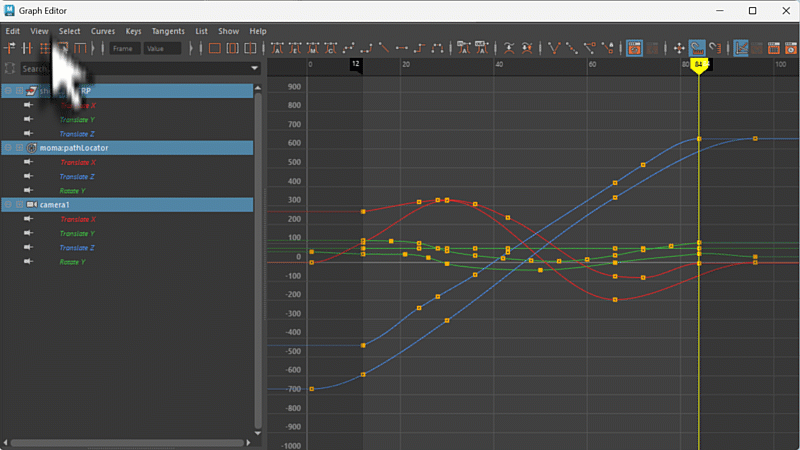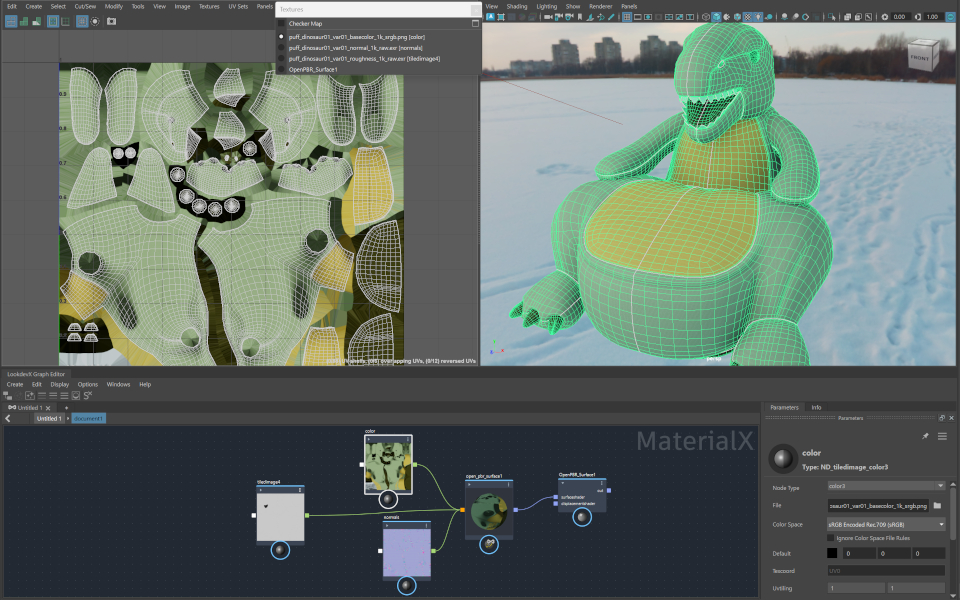Autodesk releases Maya 2026.3 and Maya Creative 2026.3

Autodesk has released Maya 2026.3, the latest version of its 3D modeling and animation software for visual effects, games and motion graphics work.
The release adds new tools for creating procedural effects like animated wrinkles during character rigging, and adds initial support for destruction simulation in Bifrost.
The LookdevX, USD for Maya and Arnold for Maya plugins have all also been updated.
Autodesk has also released Maya Creative 2026.3, the corresponding update to the cut-down edition of Maya for smaller studios.
Character rigging: new Dynamic Geometry Attributes for analyzing character deformation
Character artists get a number of new features in Maya 2026.3, including a set of Dynamic Geometry Attributes for analyzing and visualizing surface deformation.
The nodes are intended to help create effects like wrinkles generated procedurally as a character’s limbs move.
The dgaTension and dgaDelta nodes compare two states of a character mesh on a per-vertex basis, generating surface tension values and positional delta values respectively.
For real-time visual feedback, the data they generate can be passed to the dgaVisualizer node, which displays the information as a heat map, as shown in the video above.
For final-quality rendering, the dgaToArray node acts as a bridge between the calculation nodes and the material system of Autodesk’s Arnold renderer, making it possible to drive shader properties with per-vertex deformation data: for example, to create those procedural wrinkles.

Animation: Channel Sets help organize animation channels in the Graph Editor
Animators get workflow improvements to the Graph Editor, including the option to create Channel Sets: custom, color-coded collections of animation channels.
The workflow is intended to reduce visual clutter when working with complex rigs.
Animators also get workflow improvements when creating shots using the Camera Sequencer, and a new demo project for Animate in Context, added in Maya 2026.0 to enable users of Autodesk’s Flow Production Tracking platform to view the shots surrounding the active scene.

Simulation: initial support for rigid-body dynamics in Bifrost for Maya
Bifrost for Maya, Maya’s node-based framework for building effects, has been further extended in Maya 2026.3, with Bifrost 2.15 adding initial support for destruction simulations.
There are two components: Booleans and fracturing, and rigid body dynamics.
Artists can pre-fracture geometry using the new Boolean nodes, using a range of methods including Voronoi fracturing, then break the fractured pieces apart using rigid body dynamics.
The dynamics system is based on the open-source Bullet physics engine, also used in other Maya simulation tools, and is described as capable of “basic” rigid body simulations.
In addition, Bifrost’s modular character rigging system, rolled out over recent releases, gets new modules for body parts, including legs and spines, plus aim and variable FK modules.
The liquid simulation system rolled out with Maya 2026.0 gets a new set of nodes that make it possible to generate drops and splashes on top of an ocean surface.

LookdevX: better color management and UV Editor support for MaterialX documents
LookdevX, Maya’s material authoring plugin, has also been updated, with LookdevX 1.10 extending support for MaterialX documents.
Image and surface nodes from MaterialX documents are now supported in the UV Editor, as shown above, and there are a number of improvements to color management workflows.
And although the update doesn’t add any native generative AI capabilities to LookdevX, it is now easier to connect external AI models for generating textures.
Users can now connect generative texture models that support the OpenAPI schema without writing code, by providing a JSON template configuration.
USD for Maya: new Asset Resolver troubleshoots asset loading
USD for Maya, Maya’s Universal Scene Description plugin, gets a new Asset Resolver to streamline the process of loading in assets.
The feature, which is currently only available on Windows and Linux, makes it possible to set custom search paths and tokens to reduce loading errors.
Other changes in USD for Maya 0.34 include support for lighting with the USD RectLight prim, and a change in the default material export target from USD Preview Surface to MaterialX.
Arnold for Maya: new Inference imager for stylizing rendered output
Maya’s integration plugin for Autodesk’s Arnold renderer has also been updated, with MtoA 5.5.4 introducing support for the Arnold 7.4.3 core.
Key changes include a new Inference imager, making it possible to apply image-to-image machine learning models using the ONNX framework, to stylize rendered output.
There are also performance improvements to global light sampling and volume rendering: you can find more details in our story on Arnold 7.4.3 itself.
Maya Creative 2026.3 also released
Autodesk has also released Maya Creative 2026.3, the corresponding update to the cut-down edition of Maya aimed at smaller studios, and available on a pay-as-you-go basis.
It has the same new features as Maya 2026.3, with the exception of Bifrost 2.15.
Price and system requirements
Maya 2026.3 is available for Windows 10+, RHEL and Rocky Linux 8.10/9.3/9.5, and macOS 13.0+.
The software is rental-only. Subscriptions cost $255/month or $2,010/year.
In many countries, artists earning under $100,000/year and working on projects valued at under $100,000/year, qualify for Maya Indie subscriptions, now priced at $330/year.
Maya Creative is available pay-as-you-go, with prices starting at $3/day, and a minimum spend of $300/year.
Read a full list of new features in Maya 2026.3 in the online documentation
Have your say on this story by following CG Channel on Facebook, Instagram and X (formerly Twitter). As well as being able to comment on stories, followers of our social media accounts can see videos we don’t post on the site itself, including making-ofs for the latest VFX movies, animations, games cinematics and motion graphics projects.
